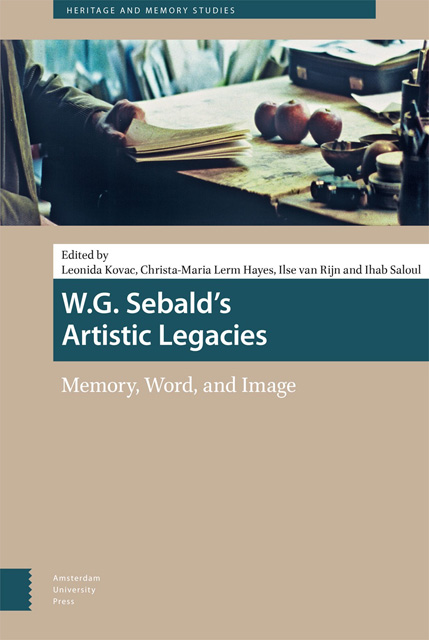4 - Seeing the Void?: On Visual Representations of “Arisierungen,” Forced Absences, and Forms of Taking Inventory in the Installation Invent arisiert by Arno Gisinger
Published online by Cambridge University Press: 26 October 2023
Summary
Abstract
In this essay I analyze contemporary artistic practices that visualize “Arisierungen” (“aryanizations”)—a term coined by the National Socialists for the forced transfer of property from the Jewish population in Germany, Austria, and German-occupied Europe to Nazi owners. How can this robbery, the destruction of contexts as well as restitution be visualized in art? Which interdisciplinary forms of medialization are found for the absence of these stolen objects and their relationships to their former owners? How are these non-human entities witnesses of trauma? These questions are relevant today in light of the decreasing number of human witnesses to the holocaust, and the subsequent transformation of communicative memory into cultural memory (Jan Assmann) that necessitates new forms of memory. Discourses on legitimate forms of visual representation of Nazi crimes and art after Auschwitz (Theodor W. Adorno) raise questions also addressed in the critique of W.G. Sebald’s work, and relevant to my interdisciplinary analysis of artistic practices dealing with “Arisierungen” that pulls on memory, history/historicity, and void/absence in the work of Anna Artaker, Maria Eichhorn and Arno Gisinger. I also concentrate on the relationship between institutions and artists, asking: Do artists work on behalf of institutions to research institutional history, or are artists’ projects independently executed? How can these works be contextualized in terms of (post-)conceptual art and institutional critique? Do they employ an archival aesthetic, one also used by Sebald? And finally, how is language relevant in these artistic practices?
Keywords: Appropriation, Representability, Aesthetics, Ownership, Systematization and Destruction
To see the void means to register something in perception that belongs to that perception but is absent in it; it means to see the absence of what is missing as a quality of presence.
—Rudolf Arnheim, Anschauliches DenkenIntroduction
“Seeing the void” is a way to address the emptiness and absence caused by “Arisierungen” (“aryanizations”) in selected works of contemporary art and approaches. Each “aryanization” has been accompanied by the destruction of ownership and property relations, connections and contexts, forcefully inflicting emptiness where an intact, living environment had once thrived.
- Type
- Chapter
- Information
- W. G. Sebald's Artistic LegaciesMemory, Word, and Image, pp. 81 - 98Publisher: Amsterdam University PressPrint publication year: 2023



